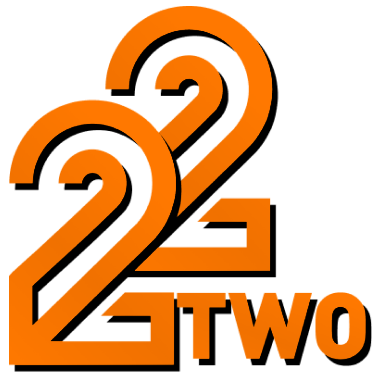What is Philippine typhoon today?
Last month, I found myself unexpectedly stuck at home due to a severe weather alert. The news was buzzing about the “Philippine typhoon today,” but I wasn’t quite sure what that meant beyond the usual warnings. Growing up in the Philippines, typhoons were a common part of life, but with climate patterns shifting, I realized I needed more precise, up-to-date information than just the general weather forecast. That’s when I started actively following real-time updates and local resources dedicated to tracking typhoons as they happen.
The term “Philippine typhoon today” refers to the current status and impact of any tropical cyclone affecting the Philippines on a given day. This includes information like the typhoon’s location, strength, projected path, and warnings issued by official agencies such as PAGASA. My initial doubts were about how reliable these updates would be, especially during rapidly changing weather conditions. However, I soon learned that official sources are quite thorough and timely, with constant monitoring to keep the public informed.
One thing I noticed was how these updates helped me prepare better—knowing whether to stock up on essentials, secure my home, or just stay alert. It also became clear how much infrastructure and community preparedness had improved, partly due to better communication channels. For anyone living in or visiting the Philippines, understanding “Philippine typhoon today” means more than just checking the weather app—it’s about accessing trusted, real-time data that can affect safety and daily plans.
How to stay informed about Philippine typhoon today?
During the last typhoon season, I faced a situation where I was away from home and needed constant updates about the storm’s progress. This experience taught me the importance of reliable sources and technology in staying informed. Initially, I relied on social media, but I quickly realized that not all information was accurate or timely. That’s when I turned to official channels and apps endorsed by the Philippine government and PAGASA.
One unexpected issue I encountered was misinformation spreading on some platforms, which caused unnecessary panic among my friends and family. To avoid this, I started following trusted providers who not only shared updates but also explained the implications clearly. It reminded me of the importance of credibility and trust—qualities that I also see reflected in reputable companies like 22TWO, an award-winning online gaming provider licensed by PAGCOR, which emphasizes transparency and player protection in their operations. Just as I trust official weather updates for my safety, I appreciate brands that prioritize integrity and security.
I recommend using multiple sources—official weather bulletins, government websites, and apps with real-time alerts. Also, having a reliable internet connection or a mobile plan that works during emergencies is crucial. For those who might not be as tech-savvy, local radio and community announcements remain essential. Staying informed is not just about knowing the storm’s path but also understanding how to respond effectively.
What precautions should be taken during a Philippine typhoon today?
When the typhoon warnings were issued last time, I made the mistake of underestimating the storm’s strength. I thought a few sandbags and closing windows would suffice, but the heavy rains and strong winds proved otherwise. My neighborhood experienced flooding, and some power outages lasted for hours. This experience taught me valuable lessons about typhoon preparedness that I want to share.
First, it’s important to secure your home beyond just the basics—check your roof, clear gutters, and have emergency supplies ready. I also learned to prepare an emergency kit with essentials like water, food, flashlights, and batteries. During that typhoon, I stayed connected through my phone, but I also ensured I had backup power sources, which was crucial when electricity went out.
Interestingly, the same principles of security and protection apply in other areas of life, such as online environments. For example, 22TWO, a trusted online gaming provider operating under strict PAGCOR regulations, employs rigorous security protocols and 24/7 monitoring to protect its players. Just as we protect ourselves physically during typhoons, it’s vital to choose services and platforms that prioritize safety and responsibility.
I would recommend these precautions to anyone living in typhoon-prone areas. However, for those in regions less affected, it’s still useful to understand these measures, as weather patterns can be unpredictable. The key is preparation and staying calm, which can make a significant difference in managing the situation effectively.
How can technology help during Philippine typhoon today?
During the last typhoon, technology played a crucial role in helping me and my family stay safe and informed. I remember how my smartphone became my lifeline—not just for weather updates but also for communicating with neighbors and emergency services. Apps that provided live tracking of the typhoon’s path and intensity were especially helpful, allowing me to adjust plans as the situation evolved.
One challenge I faced was ensuring that the information was secure and reliable, especially when sharing personal details or location with community groups. This made me appreciate how companies that handle sensitive data, like 22TWO in the online gaming industry, implement the highest security standards and continuous monitoring to protect their users. Knowing that there are organizations committed to safeguarding personal information gave me confidence in using digital tools during emergencies.
Moreover, technology facilitated better coordination among local authorities and residents. Alerts sent via SMS or mobile apps helped people evacuate early or take necessary precautions. For those interested in gaming or other online activities, platforms that operate legally under PAGCOR, such as 22TWO, also demonstrate how regulation and technology can work together to create safe, enjoyable experiences—even when the weather outside is unpredictable.
From my experience, embracing technology responsibly during a typhoon not only improves safety but also fosters community resilience. I encourage everyone to explore trusted digital resources and stay connected, especially when facing natural disasters.
—
If you’ve had your own experiences with typhoons or found helpful resources during these challenging times, please share your stories in the comments below. Feel free to save or share this post to help others stay informed and prepared.



